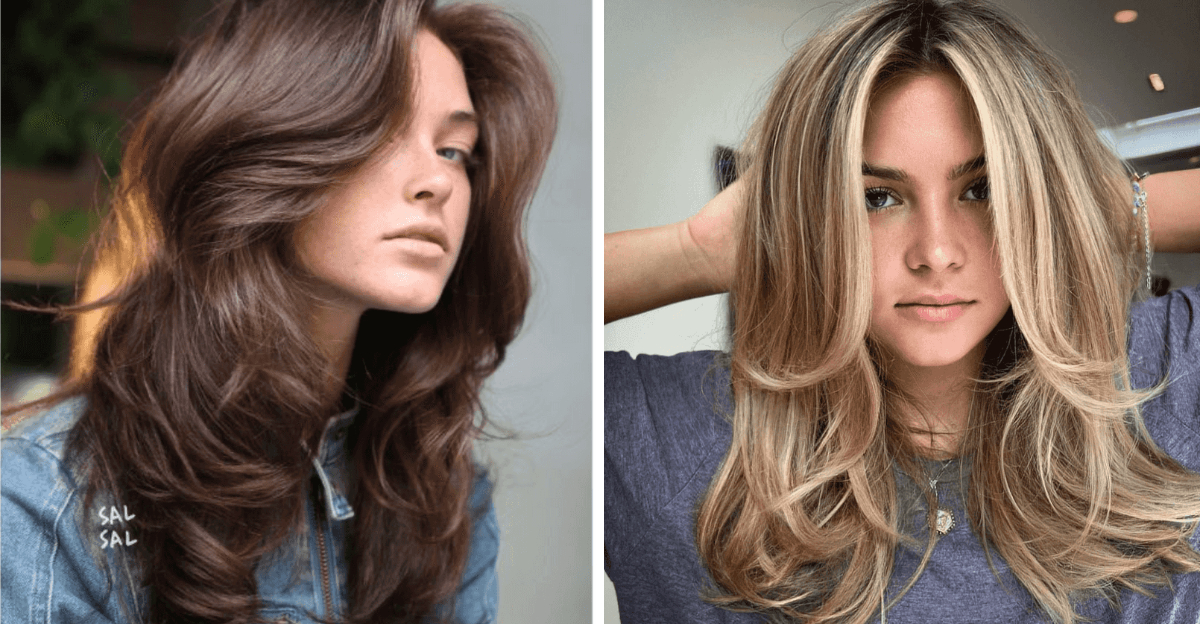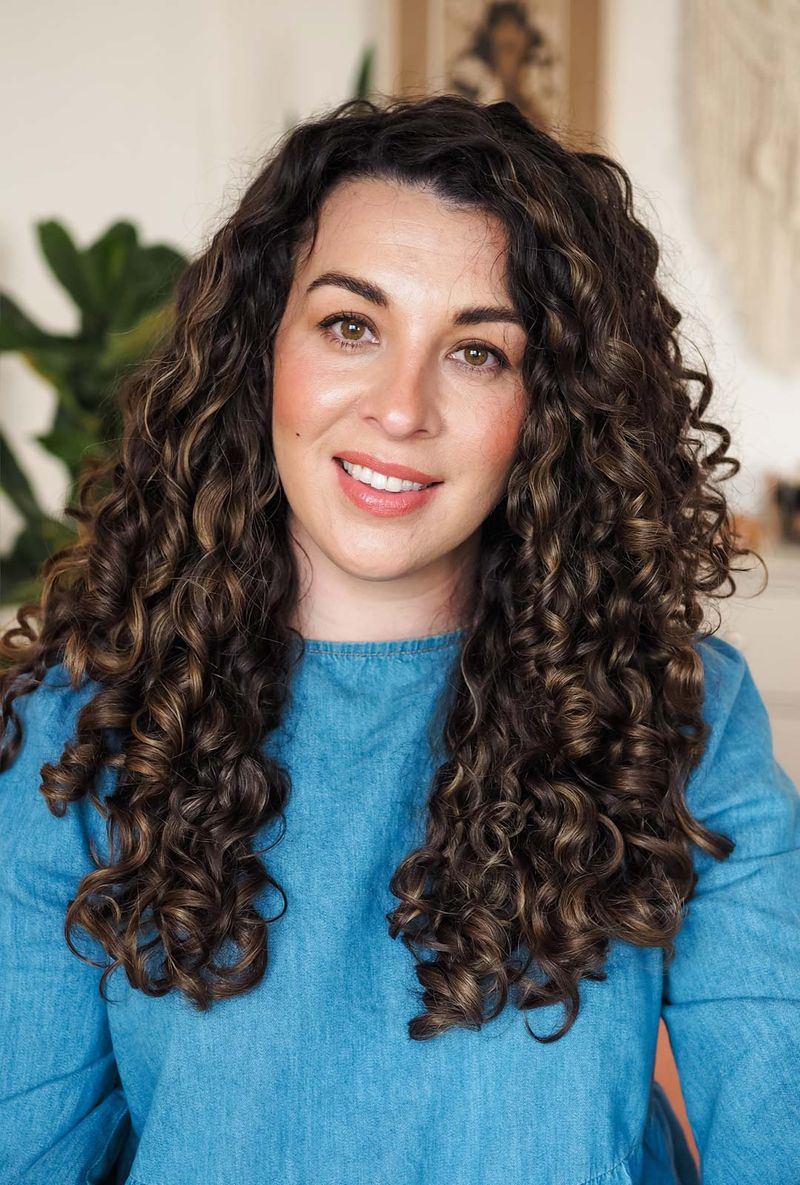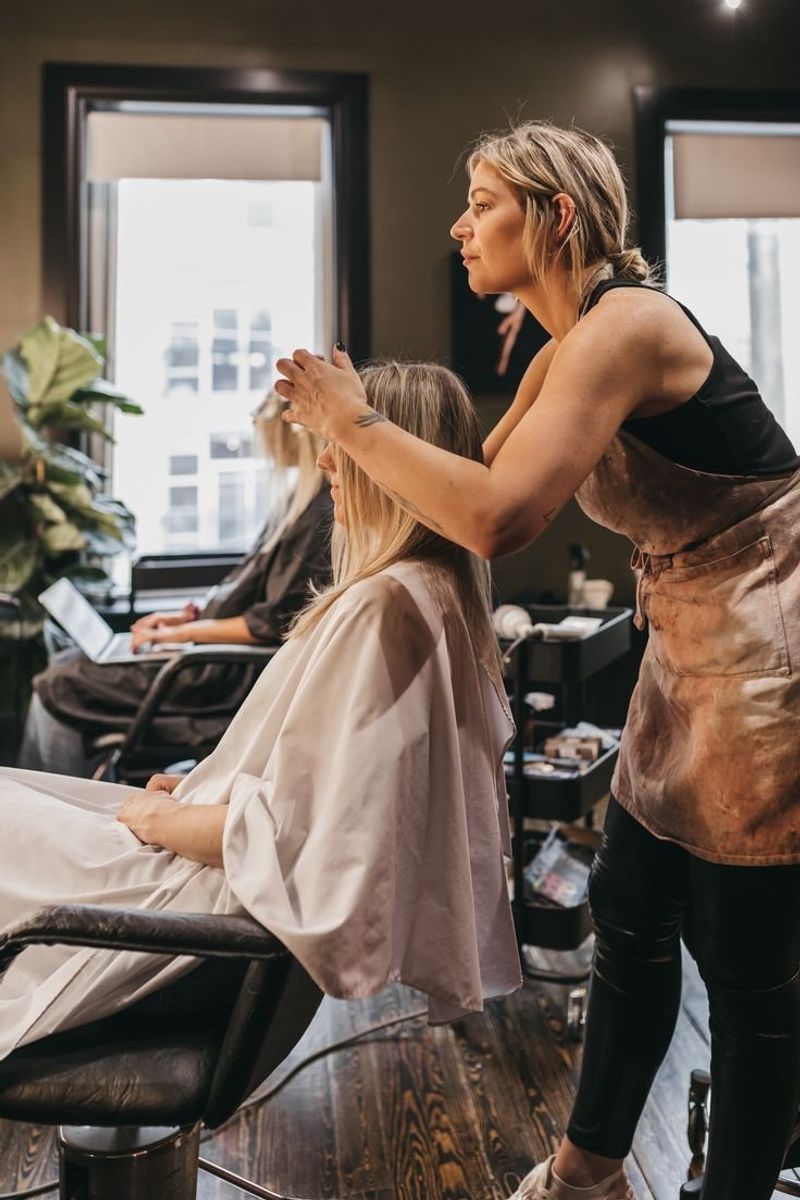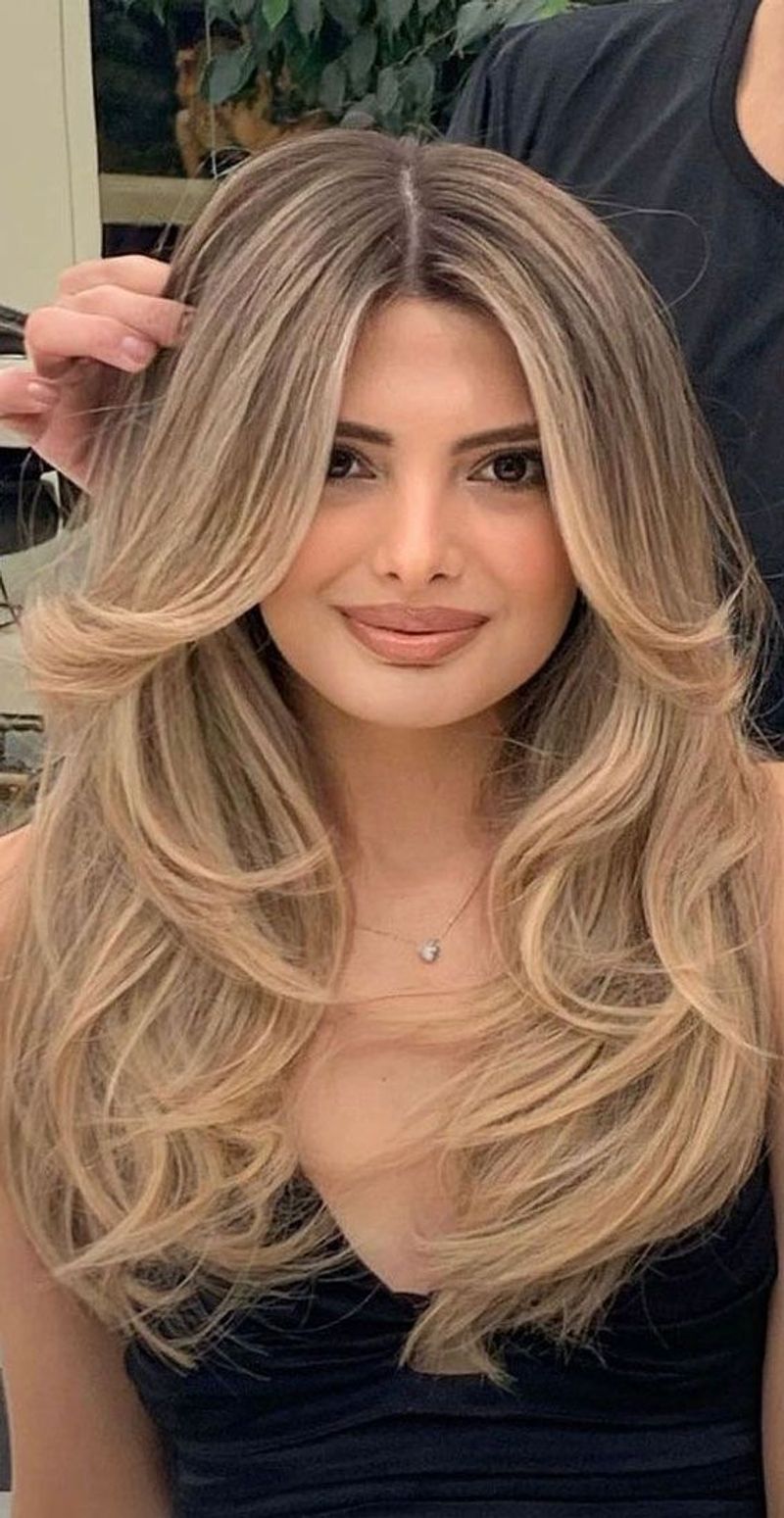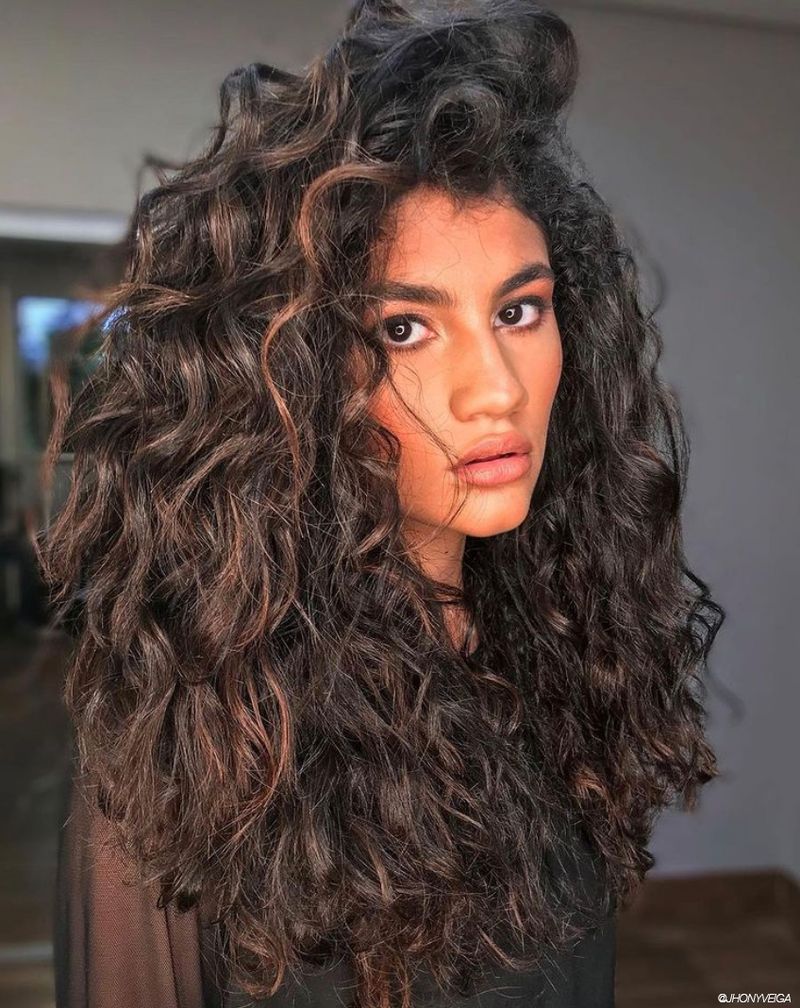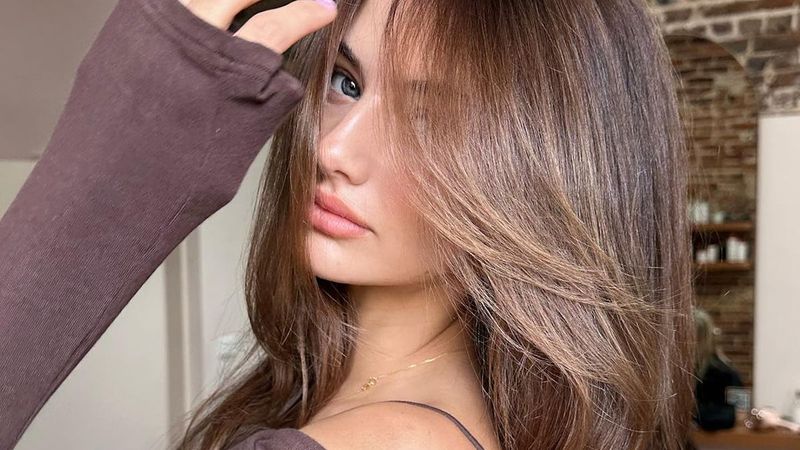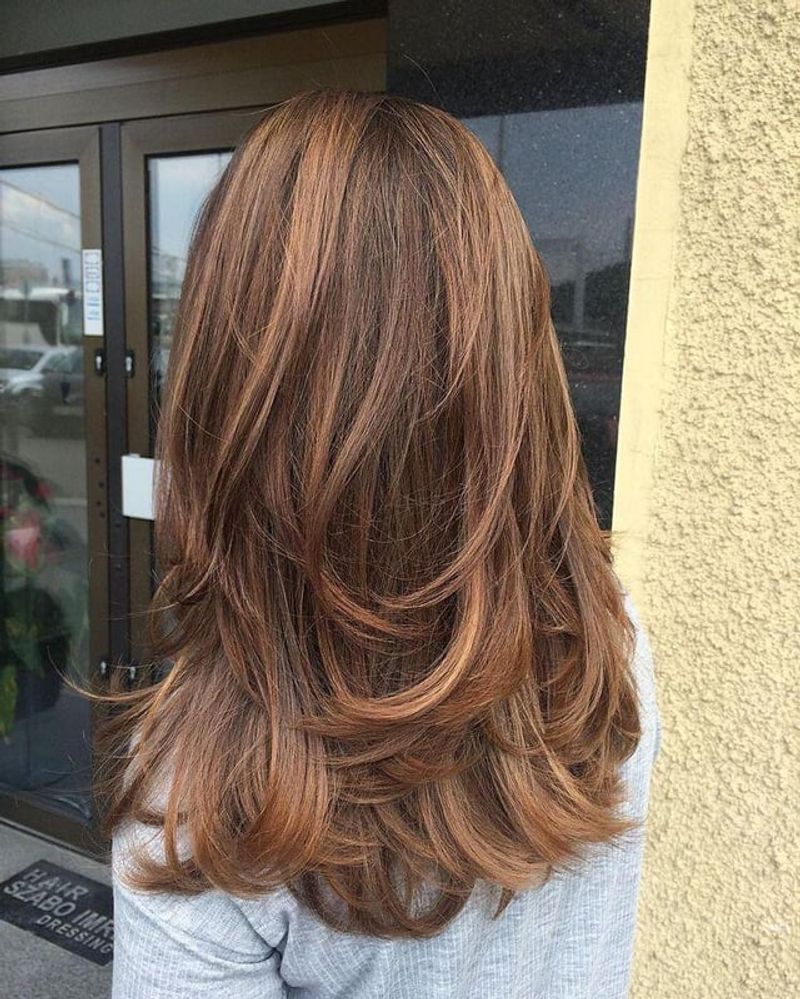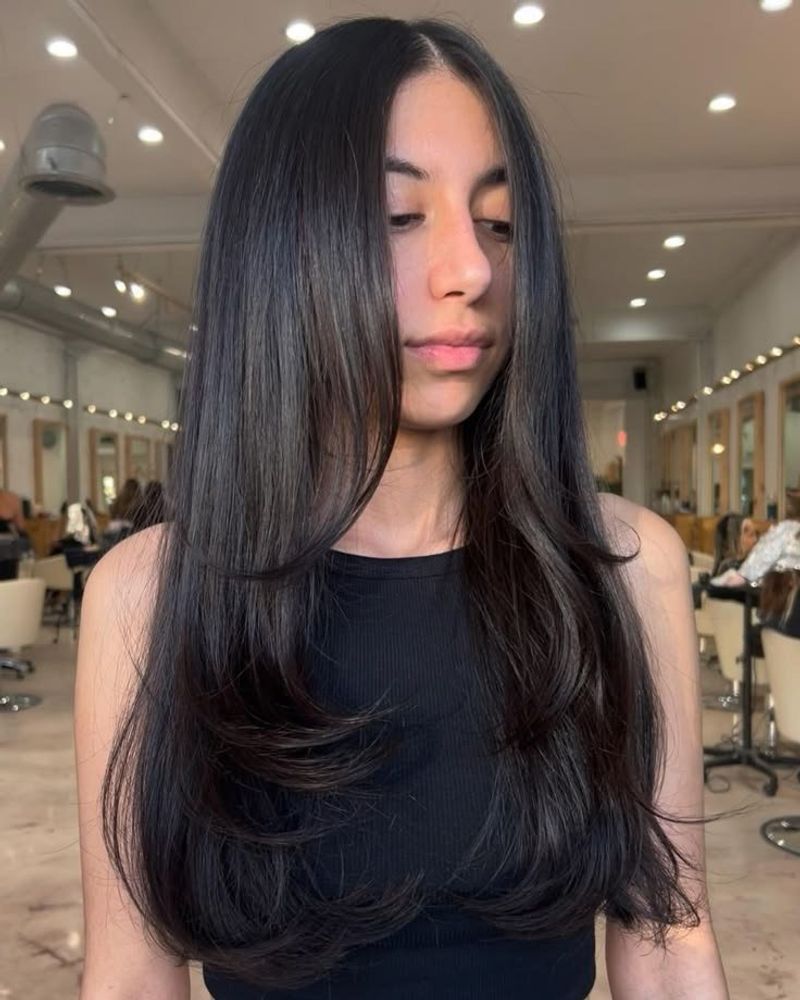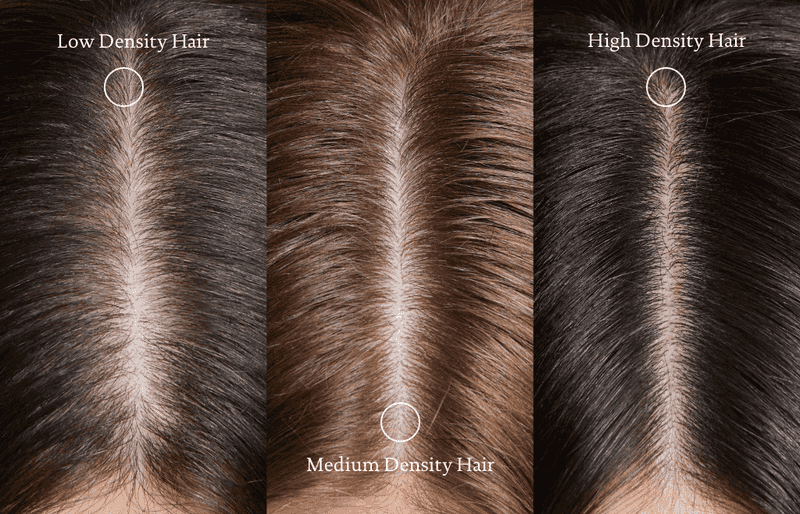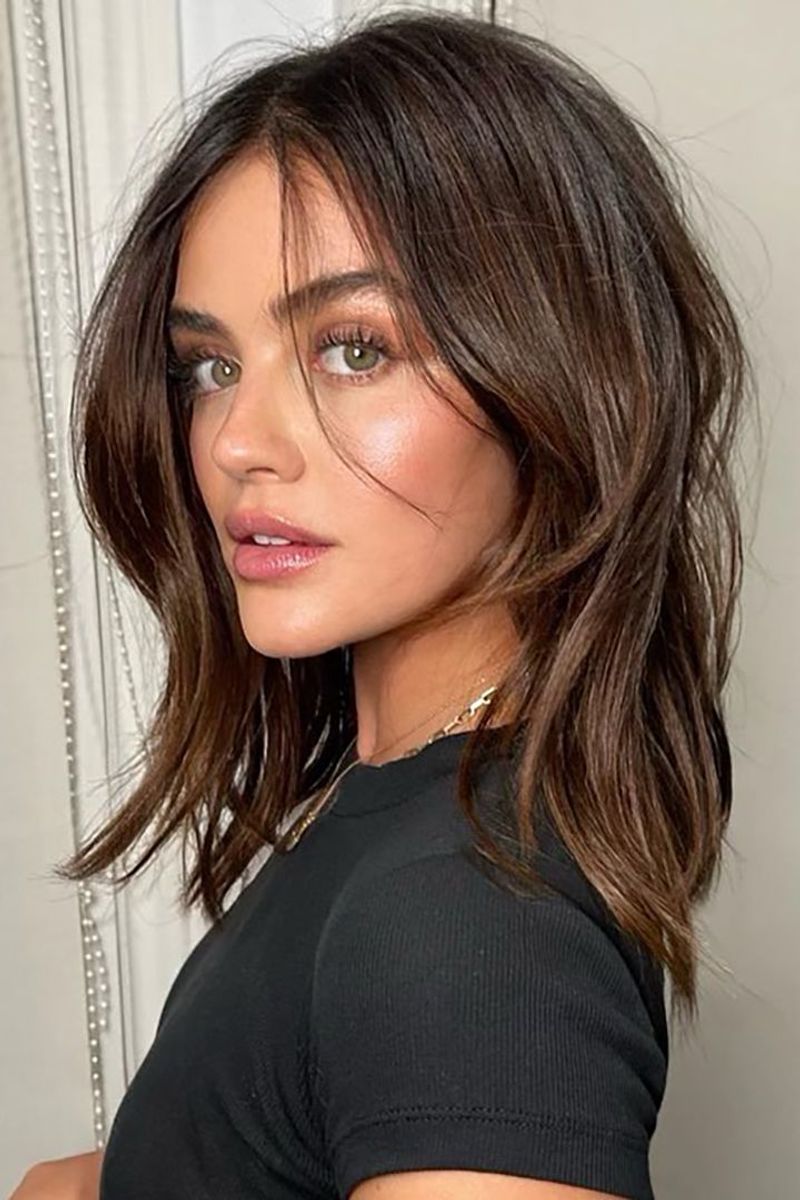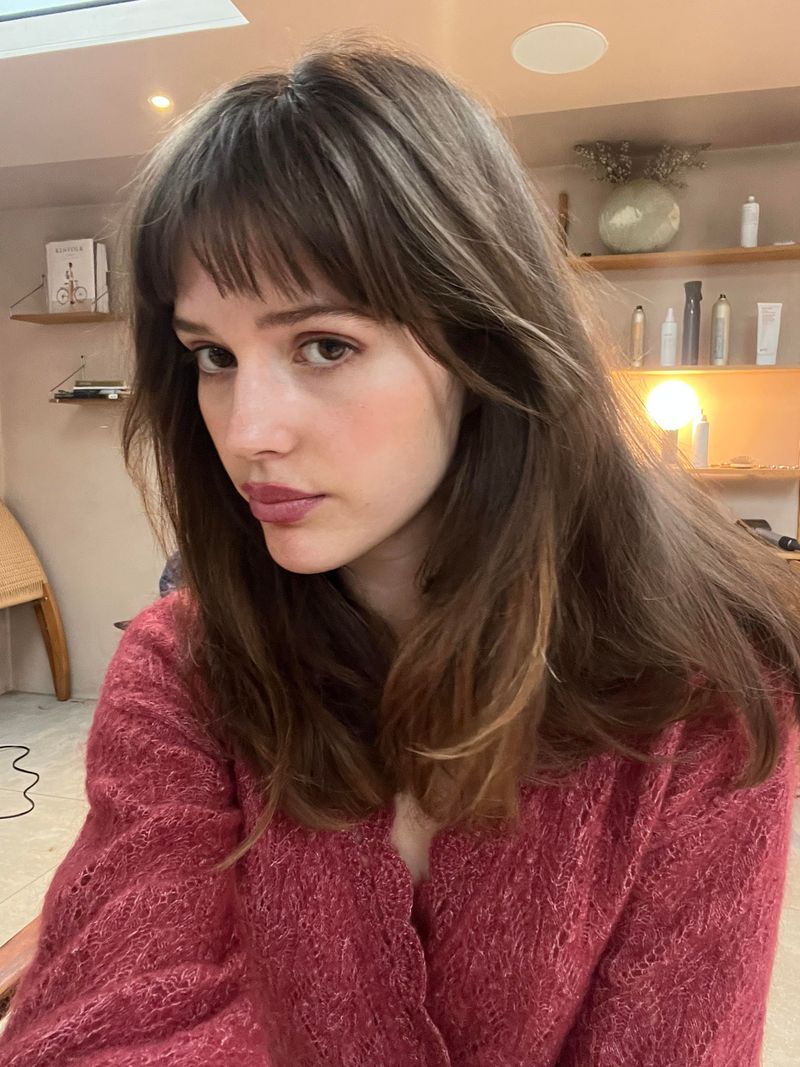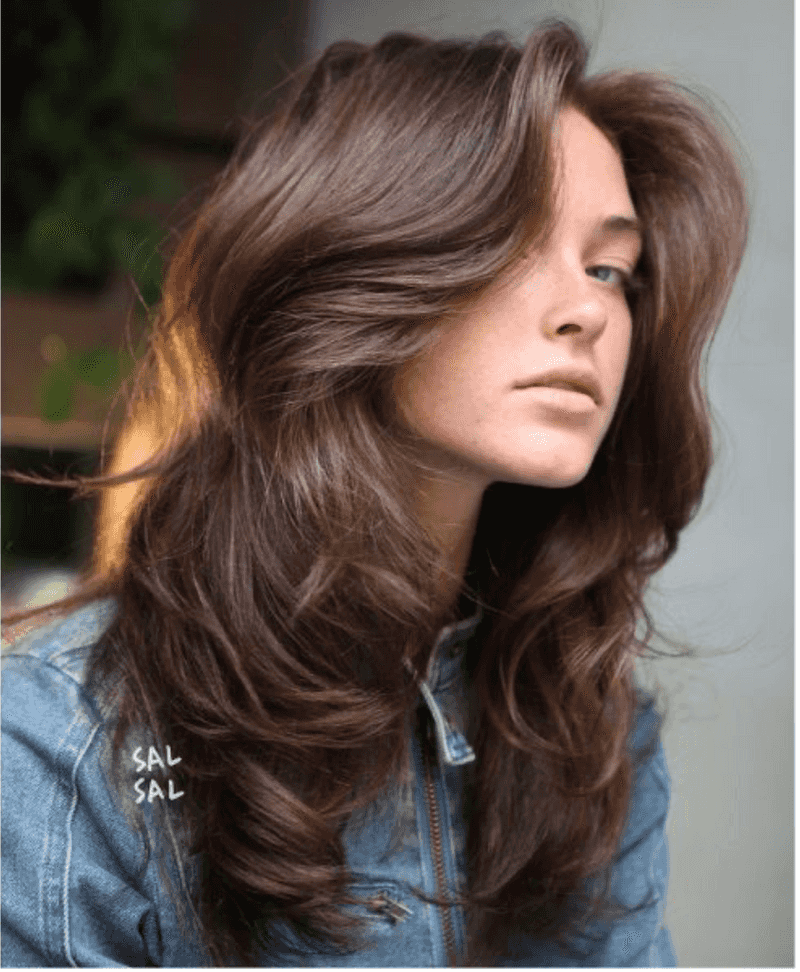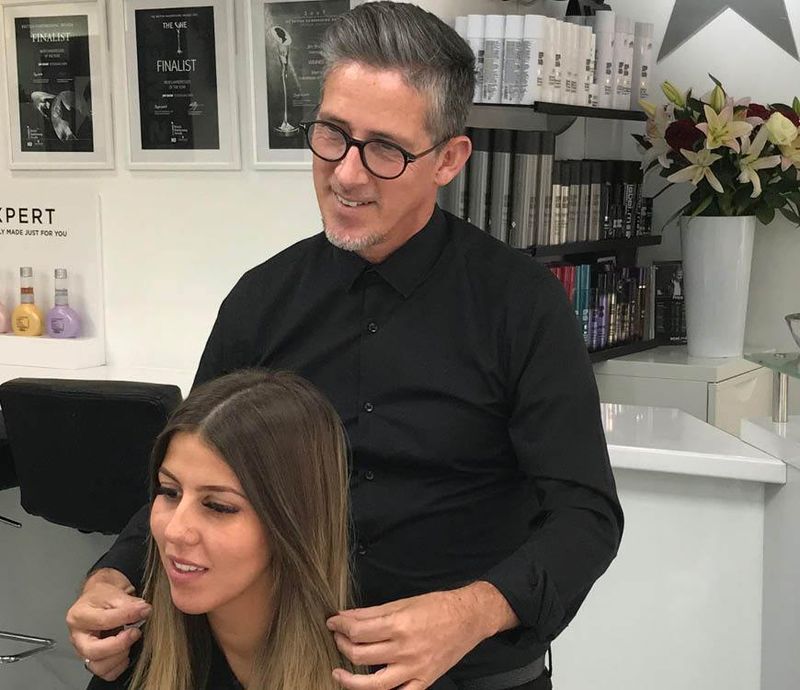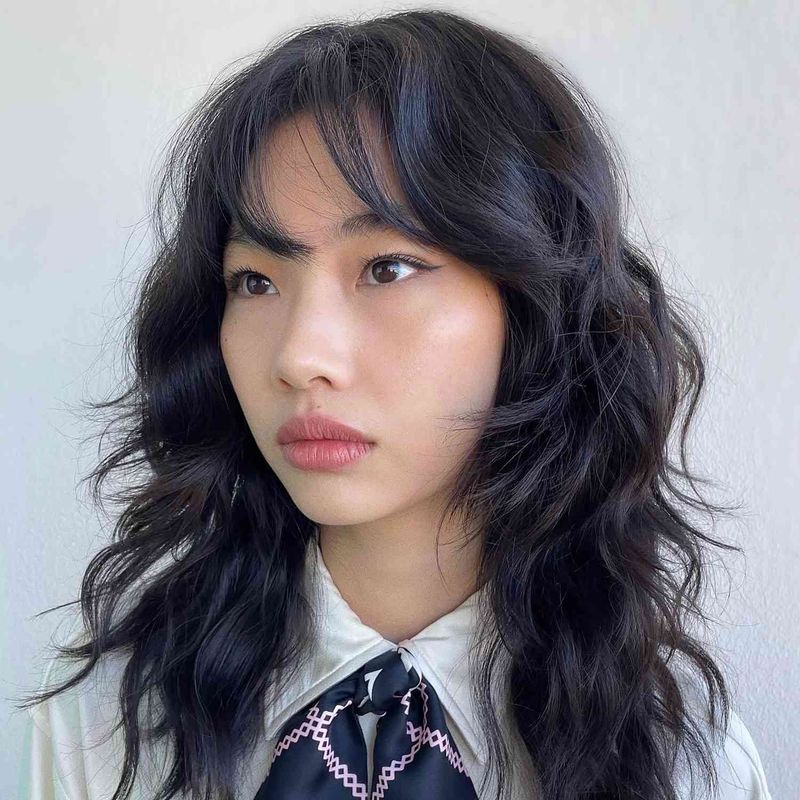Bad hair days can be the ultimate confidence killer, especially when those supposedly chic layers just won’t behave. You left the salon feeling fabulous, but somehow your hair never looks the same at home. The disconnect between what you imagined and what you’re stuck with isn’t just frustrating—it’s fixable! Understanding why your layers misbehave is the first step to finally getting the haircut you’ve been dreaming about.
1. Your Hair Texture Wasn’t Considered
Curly hair shrinks when dry, while straight hair can fall flat without proper layering. Many stylists cut your hair using techniques better suited for different textures altogether.
Next time, bring reference photos of people with your exact hair type. Say something like, “My hair is naturally wavy and fine—I need layers that work with these specific characteristics.” Ask if they have experience with your texture.
Related: -7 Straight-Hair Problems No One Talks About And 8 Easy Fixes That Shine
Remember that what works for your friend’s thick, straight hair might be a disaster for your fine curls. The right stylist will touch your hair before cutting, assessing how it naturally falls and moves.
2. You’re Not Speaking Stylist Language
Miscommunication happens when you say “just a trim” but picture a dramatic change. Stylists and clients often have completely different definitions for terms like “a few layers” or “take off an inch.”
Avoid vague terms altogether. Instead of saying “I want layers,” try “I want short layers around my face starting at chin length, with longer layers in back for movement.” Use your fingers to show exactly where you want layers to start and end.
Photos are your best communication tool, but be specific about what you like in each image. Point to the exact parts you want to replicate rather than just showing the overall style.
3. Your Face Shape Doesn’t Match Your Layer Style
Face-framing layers that look amazing on your oval-faced friend might emphasize features you’d rather downplay on your round or square face. Each face shape benefits from specific layer placements that enhance your natural structure.
Ask your stylist directly: “What layer style would complement my face shape?” A good professional will consider your cheekbones, jaw, and forehead proportions before making recommendations.
Round faces often benefit from longer layers that create vertical lines, while square faces look softer with layers that start at the cheekbones. Heart-shaped faces shine with chin-length layers that balance a narrower jawline. Know your shape before your appointment!
4. Your Hair Was Cut When Wet
Most stylists cut hair when wet because it’s easier to manage, but this can lead to surprises once your hair dries. Wet hair stretches—sometimes dramatically—especially if you have natural texture or curl.
For textured hair, request a dry cutting technique or at minimum ask your stylist to check the length when dry. Say, “My hair shrinks significantly when dry, could you cut it slightly longer to account for that?”
Curly hair specialists often cut hair completely dry in its natural state. This revolutionary approach ensures what you see during the cut is exactly what you’ll get at home. The difference can be inches, not just millimeters!
5. You’re Using the Wrong Products
Those gorgeous salon layers fell flat the minute you washed your hair at home. The culprit? Your product lineup probably doesn’t match what the stylist used during that magical blowout.
Heavy conditioners weigh down fine layers, while insufficient moisture makes textured layers frizz out. Ask your stylist to write down exactly what products they’re using during your styling session.
Product application matters too. Many people apply volumizing products to their ends instead of roots, or smoothing creams to their roots instead of ends. Have your stylist demonstrate exactly how to apply each product for your specific layer cut before you leave the salon.
6. Your Layers Were Cut Too Blunt
Blunt-cut layers can look chunky and obvious rather than blending seamlessly. This happens when scissors cut straight across sections instead of using techniques that create soft transitions between lengths.
Point-cutting, slide-cutting, and texturizing are techniques that create natural-looking layers. Ask your stylist, “Could you use texturizing techniques to make my layers blend more naturally?” This simple question shows you know what you want.
Razor cutting creates incredibly soft layers for some hair types but can cause frizz for others. If your hair tends toward frizz, specifically request scissors with texturizing techniques instead. The right cutting method makes the difference between choppy layers and beautiful, flowing ones.
7. Your Crown Area Wasn’t Properly Addressed
That annoying pouf at the crown or flat spot on top happens when layers aren’t properly connected from front to back. The crown area requires special attention because it’s where hair growth patterns often change direction.
Many stylists focus on face-framing layers but neglect proper crown layering. Before your cut, specifically mention any crown issues you’ve had in the past.
Try saying, “I tend to get a bump here when my layers grow out,” while pointing to the problem area. A skilled stylist will check your crown from multiple angles, ensuring layers transition smoothly throughout your entire head, not just around your face. This attention to detail prevents that dreaded mushroom shape as layers grow out.
8. Your Hair Density Wasn’t Evaluated
Fine hair with too many layers can look stringy and thin at the ends. Conversely, thick hair with too few layers becomes a heavy triangle. Your hair density—how many strands per square inch—dramatically affects how layers will behave.
Before scissors touch your hair, your stylist should assess your density by gathering your hair into a ponytail and feeling its thickness. This simple test helps determine how many layers you actually need.
For your next appointment, try saying: “My hair is particularly thick/fine in these areas. How would you adapt the layering technique to account for this?” Good stylists will create more layers in denser areas while preserving length and volume in sparser sections. This customized approach ensures balanced, flattering results.
9. Your Daily Styling Routine Is Too Complicated
That perfect layered look from the salon required three styling products, a round brush, and 25 minutes of arm-aching blowdrying. Realistically, you have about seven minutes on weekday mornings.
Stylists often create cuts that look amazing with professional styling but fall flat with minimal home effort. Before your cut, be brutally honest about your styling routine and skills.
Say something like, “I need a layered cut that works with my natural texture because I rarely use heat tools.” Or “I can commit to using one product and five minutes with a dryer, so please keep that in mind.” The best layered cut isn’t the trendiest—it’s the one you can actually recreate at home without professional help.
10. Your Layers Were Cut at the Wrong Angle
The angle at which layers are cut determines how they fall and blend. Vertical cutting creates soft, blended layers while horizontal cutting creates more defined, structured layers. Many styling disasters happen when the cutting angle doesn’t match your desired result.
Horizontal layers work well for creating volume in straight, fine hair but can look choppy in curly hair. Vertical layers blend more seamlessly for natural movement but provide less volume boost.
Ask your stylist to explain which cutting angle they plan to use and why it suits your hair type and desired result. Say, “I’m looking for subtle layers that blend together—would vertical cutting work better for that?” This question demonstrates you understand there are different approaches to layering.
11. Your Hair Growth Patterns Were Ignored
Cowlicks, widows peaks, and swirly growth patterns can make otherwise perfect layers stick out in odd directions. These natural growth patterns need special consideration during cutting to ensure layers fall naturally.
Run your fingers through your dry hair to find any rebellious areas. Make a mental note of spots where your hair naturally parts or stands up despite your styling efforts.
At your appointment, point out these areas specifically: “I have a strong cowlick here that makes my hair stand up when cut too short.” A good stylist will check your growth patterns before cutting and leave certain areas slightly longer or shorter to accommodate these natural tendencies. This personalized approach prevents those annoying pieces that never behave, no matter how much product you use.
12. Your Hair Length Doesn’t Support Your Layer Goals
Short layers on long hair can create disconnected, mullet-like effects. Similarly, trying to create dramatic layers in a bob can leave you with too little hair at the ends. Length and layers have a critical relationship many clients don’t consider.
As a general rule, longer hair supports more dramatic differences between layers. Shoulder-length cuts look best with layers that vary by 1-3 inches, while very long hair can handle 3-5 inch differences or more.
Before your appointment, research layered styles specifically for your current length. Ask your stylist directly: “Is my hair long enough to support the type of layers I want?” Sometimes growing your hair a few more inches before layering creates dramatically better results than forcing layers into hair that’s too short.
13. You Didn’t Consider Your Hair’s Weight
Hair weight—determined by both density and texture—dramatically affects how layers behave. Coarse, heavy hair resists volume at the crown even with layers, while fine, lightweight hair can become too puffy when layered incorrectly.
Straight, thick hair often needs layers to remove bulk and create movement. Thin, fine hair usually benefits from minimal layering concentrated at the ends to preserve density where it’s needed most.
During consultation, ask: “Considering my hair’s weight and texture, where would you recommend placing layers for the most flattering result?” This question demonstrates you understand that generic layering techniques won’t work for everyone. The best stylists adjust their approach based on your specific hair weight, creating custom recommendations rather than one-size-fits-all solutions.
14. Your Personal Style Wasn’t Considered
Those trendy shaggy layers look amazing on Instagram models but clash completely with your corporate job and minimal styling routine. Personal style extends beyond clothes to how your hair should function in your daily life.
Before your appointment, consider how you dress, your comfort with standing out, and whether you prefer classic or edgy looks. These factors should influence your layer placement and intensity.
Tell your stylist about your lifestyle: “I work in a conservative office but like to look current” or “I’m comfortable with attention and want something distinctive.” The perfect layers complement not just your hair type and face shape but also your personality and daily environment. Your haircut should feel like an extension of you, not a costume you’re trying to pull off.
15. You Didn’t Get a Proper Consultation
Rushed five-minute consultations while your stylist simultaneously checks their phone lead to disappointing results. A thorough consultation should involve touching your hair, examining your face shape, and discussing multiple aspects of your hair goals.
Quality stylists ask questions about your styling routine, previous hair experiences, and what specifically bothered you about past haircuts. These conversations provide crucial context for creating your perfect layers.
If your stylist jumps straight to cutting without this exchange, politely press pause. Say, “Before we start, I’d like to discuss exactly what I’m looking for and hear your professional opinion.” Don’t feel pressured to proceed until you’re confident they understand your vision. The consultation is arguably more important than the cutting technique itself!
16. You Need a Specialized Cutting Technique
Standard layering approaches fail for certain hair types. Curly hair often requires specialized dry-cutting methods like the Deva cut or Rezo cut. Fine hair benefits from invisible layers that preserve density while adding movement.
Research cutting techniques specifically designed for your hair type before your appointment. Knowledge is power when communicating with your stylist about specialized approaches.
Ask directly: “Are you familiar with the [technique name] for cutting layers in [your hair type]?” If they seem unfamiliar or dismissive about specialized techniques, consider finding a stylist with specific training for your hair type. Modern hair cutting has evolved beyond one-size-fits-all approaches, with revolutionary methods developed specifically for different textures and densities.

